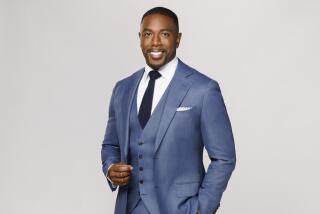Departure widens talk radio’s gender gap
- Share via
After 14 years at KABC-AM (790), and with her air time ebbing, Gloria Allred vanished altogether from the airwaves last week. The disappearance of the attorney and liberal commentator didn’t just change the lineup at her station; it also highlighted the overall scarcity of female voices in talk radio.
“Basically you have all-male radio, all the time, and I think it’s a real disservice to the community,” said Susan Estrich, consultant, commentator and USC law and political science professor, who had her own KABC program on weekends until 1997. “I’m a believer we need to have all kinds of voices on the air.”
Allred went from having her own show to being paired with conservative partner Mark Taylor; then their show went from nearly three hours on weekday mornings to 45 minutes, when Fox commentator Bill O’Reilly’s radio show debuted and ate up their first two hours earlier this year.
Allred wouldn’t discuss how the show was canceled, or where or when she might reappear on the air. But she said that instead of serving its presumed audience of conservative white men, talk radio “should always be trying to expand its base. What is its duty to its community, or does it have none?”
“It is a problem. It’s 2002, and for the most part talk radio in the nation is still a white male bastion, with rare exceptions,” Allred said.
KABC executives couldn’t be reached for comment. But Allred’s departure may have little to do with gender, said Michael Harrison, publisher of Talkers magazine, the industry’s trade publication. “I think it’s as much a case that she’s a liberal.”
Sports and conservative politics have long been the staples of talk radio, and those have traditionally been the purview of men. “It’s not that there aren’t women participating in talk radio, or there aren’t women listening to talk radio,” Harrison said. “Women are definitely in the minority in talk radio, which is a holdover of the early trend of radio. But it’s changing slowly.”
He pointed to Laura Schles- singer, whose nationally syndicated show has the country’s third-largest audience, behind only Rush Limbaugh and Sean Hannity. She’s heard locally from noon to 3 p.m. on KFI-AM (640), the Southland’s top-rated talk station. But she’s also the only woman in its weekday lineup. KABC now has none.
On Talkers’ list of the 100 most important radio talk-show hosts in America, only 14 are women, and three of those -- including Allred -- are members of male-female duos. In addition, many have only local programs or niche-subject, once-a-week shows.
“I do not think there is a conspiracy,” Harrison said. “Men [also] have trouble breaking into the talk radio field. It’s a slow business to change.”
There may not be a conspiracy, but Estrich contended that “the nature of discrimination nowadays is unconscious. People put on people they like to hear, and they like to hear people like them. It’s safe. If 199 other stations are doing it, you’re not going to get fired by doing it.”
Or as Allred put it, “The old boys choose the old boys.”
But one woman in charge, Robin Bertolucci, director of AM programming in Los Angeles for Clear Channel Communications, said she would welcome more female on-air talent. “I’m looking. I’m available. Call me. I wish I knew why there aren’t more,” said Bertolucci, who oversees KFI as well as talker KLAC-AM (570) and Fox sports outlet KXTA-AM (1150). To be successful in talk radio, a host must be opinionated, but although that trait is generally accepted in men, she said, women who display it are often labeled “bitchy.”
“You have to have a woman who has a sense of playfulness,” she said, but who also has the strength of her opinions.
KLAC features two women on weekdays: personal finance guru Suze Orman from 1 to 3 p.m., and interviewer Leslie Marshall from 7 to 10 p.m. Christian talk station KKLA-FM (99.5) has Rita Pardue anchoring a six-hour block starting at 10 a.m. weekdays. And conservative commentator Laura Ingraham has a show airing weekdays from 9 a.m. to noon on KPLS-AM (830).
For a while -- six months, anyway -- Los Angeles had an entire station aimed primarily at women. Disney bought KMPC-AM (710) -- then the flagship station of baseball’s Angels -- and in February 1997 turned it into KTZN, “the Zone,” a talk station with a primarily female air staff and an ad campaign that announced, “Talk radio isn’t just a guy thing.” The move was Disney’s attempt to reverse the typical talk-radio demographic, an audience that was 60% male and 40% female. But after poor ratings the company gave up and that August converted the station to the children’s-oriented Radio Disney format, which it’s been ever since.
“When I was on, there were more women calling, there were more subjects covered,” Estrich said, noting that her show dealt with topics such as pregnancy, fertility, rape, abortion, the economy and politics in ways that male hosts don’t have the personal experience to address. Without women on the air, “there are different points of view that get lost,” she said.
Allred said she’s concerned about balance and fairness on the public airwaves, noting the Republicans’ election gains and the possibility of war with Iraq. “If there’s all conservative talk-show hosts, we’re going to hear little dissent. That’s dangerous at any time,” said Allred, who also is on the board of directors of the National Assn. of Radio Talk Show Hosts.


